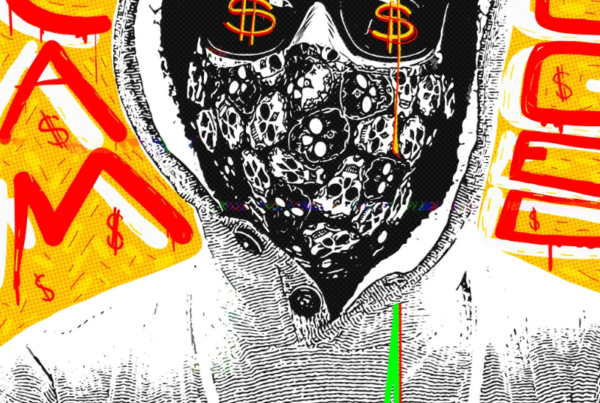It started like a typical dinner gathering with food, wine, talk of travels, politics, businesses, and babies.
Then one couple revealed they technically aren’t married in the eyes of the U.S. government. Instead, their nuptials inked years ago were based on a smart contract. A second couple (engaged) revealed they too are in the planning process for such an agreement, and a third chimed into the conversation noting that she too is contemplating such a route in divorce proceedings.
I couldn’t help but thinking if this is becoming the new normal?
The term “smart contracts” seems to come up again and again when it comes to conversations about cryptocurrencies, blockchain technology, the new-fangled world of Web3 and non-fungible tokens, otherwise termed NFTs. And now, it appears to be gaining steam with the way in which couples across the world tie the knot.
I asked one guest about the execution of their smart matrimonial contract: clauses allow both parties to renew their marriage annually or end it. He explains it is transparent, secure, borderless, self-determining, and self-executing.
But as I dig deeper, I learn that the last factor is precisely the point.
A smart contract is at the heart of decentralization as it does not require a government entity or legal intermediary to sign off on the terms. Using blockchain technology, different participants can easily create contractual terms and conditions. And when it comes to marriages, it is essentially about slicing the middleman out of one’s personal life.

Despite the “newness” of a smart contract in today’s social lexicon, the term was first coined by computer scientist and cryptographer Nick Szabo and defined by him as “a set of promises specified in digital form.”
Much like a conventional marriage contract, the smart rendition features specified conditions, although these are developed and carried out as code on a blockchain. They are deemed “smart” because they are written in a domain-specific language (DSL), which means once the terms are met, they are automatically executed.
In 2013, mega cryptocurrency Ethereum (ETH) combined Szabo’s concept of smart contracts with the then-burgeoning Blockchain technology, bringing to life a DSL language called Solidity. This paved the way for developers to construct just about any smart contract and store ETH in the record.
Thus, when it comes to getting hitched, the government does not need to take a hand.
The following year, the first known couple to get married essentially on the blockchain were Austrians David Mondrus and Joyce Bayo. As devotees of the libertarian-leaning Austrian School of Economics, the pair saw it as defying the norms of government control and a means to bring some pliability into the somewhat austere institution of marriage.
Since then, Web3 platforms such as Cryptomarry have emerged, offering services such as registering unions “on-chain,” minting a unique “NFT certificate,” and enabling couples to “manage joint crypto assets.” Other firms such as PreNupWithLove provide templates and storage services.
Smart contracts are immutable by design, meaning they cannot be changed or deleted. Each Blockchain node maintains a copy of the smart contract’s state, and once the smart contract is part of the blockchain, its terms cannot be changed. Because of this, it is impossible to manipulate them without alerting the network.
Due to the transparency of this technology, once a couple marries on the blockchain, the data of their marriage is publicly available, so it may or may not be everyone’s cup of tea.
So, what are the basic steps to a wedding in a Web3 world?
First, deploying the contract. This entails the wallet addresses of the future spouses, which cannot be changed once added. Then the contract is uploaded on the blockchain, complete with terms and conditions. Next, the couple signs through their private keys, effectively securing the deal and making the marriage official.
The nitty-gritty of a smart marriage can include anything from specifying assets and ownership, prenuptial stipulations, a divvying up of household chores, number of date nights per week, adherence to diet or fitness routines, what television shows are permitted and not permitted, money allocated to shopping or travel, or what happens in the occurrence of death or illness.
Couples can add new items, equity, and provisions (or remove them) as time goes on, providing those original private keys are used. Any alterations require the signatories of all parties.
Some couples are even opting to take things one step further by holding their ceremonies and reception in the Web3 metaverse (heck, it’s a lot cheaper to outfit your avatar with a designer dress and fuel your guests with fine wine against a whimsical mountainous backdrop than in real life). This could also involve issuing NFTs to attendees or exchanging NFT rings rather than the sparkling physical thing. Moreover, NFTs are protected by blockchain technology to prevent copying, pirating, or illegal sales. Today, NFTs are widely traded on global markets throughout the world.
The upsides of a blockchain wedding are many: they save money, are fast and fully automated, and keep prying Big Government out of your bedroom. However, there are downsides too. For example, its transparency might not be valued by those leading very private lives, and it may not be considered legally binding in many parts of the world.
And for better-for-worse, divorce and dissolution of nuptials can also be performed cheaply and seamlessly with a smart contract.
In a legacy world, a divorce generally involves both parties paying hefty legal fees in a stressful, lengthy, drawn-out, and ugly process. But if a smart contract has been initiated, there is no intermediary. Once the divorce function has been selected, all activities in the pact will automatically be invoked. Wallet assets are split according to the contract’s agreed-upon proportion.
The concept of smart contracts is still on the fringes of society. Even so, we must acknowledge that they will undoubtedly become more prevalent in the future. Despite the application of new technology, the idea of a smart marriage is perhaps not as modern as you might think.
The practice of Christians getting married outside the church was common during medieval times. It was not necessary for priests or state functionaries to perform their sacraments. It’s time to reclaim this fundamental right to personal freedom.











